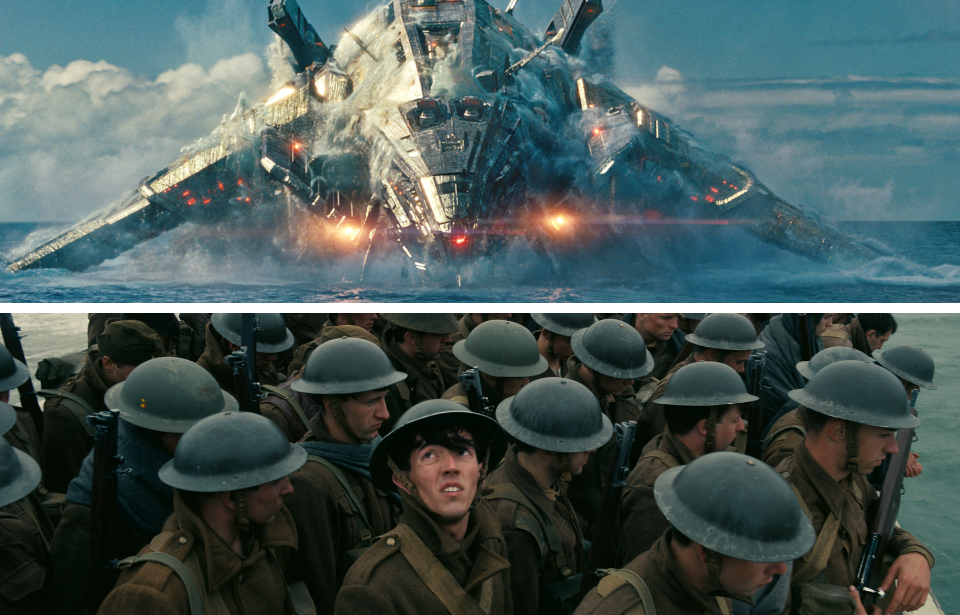American warships are often portrayed in film, due to their epic size and effectiveness in battle. In an interview with Insider, retired US Navy Adm. Jamie Foggo rates a number of scenes from various movies, to identify which ones are accurate and which have been subject to poetic license. Foggo himself served for almost 40 years, so he’s certainly qualified to debunk these scenes.
Godzilla vs. Kong (2021)
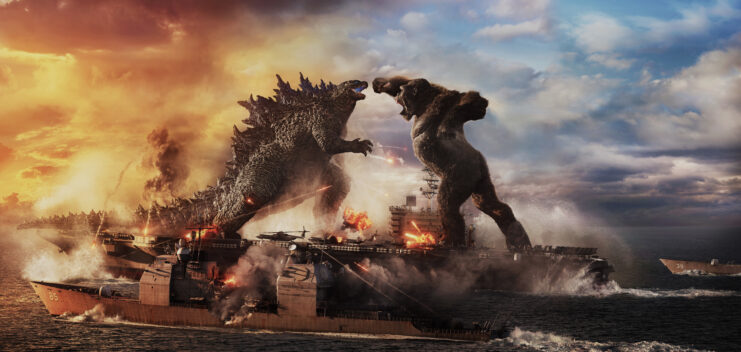
In one scene from Godzilla vs. Kong (2021), King Kong is seen standing aboard an aircraft carrier while surrounded by several other vessels. When they fire their weapons, the monster covers its ears.
Jamie Foggo reveals this action in the movie is pretty accurate, as hearing protection and conservation are important when it comes to firing a warships’ guns. He stresses that firing any weapon aboard these vessels is loud, saying, “No doubt the only damage we did to King Kong was probably rupture his eardrums.”
He also agrees that most of the weapons shown aboard the ships are more or less realistic.
When King Kong jumps onto the aircraft carrier, the scene shows the impact splitting the flight deck. Foggo explains how carriers are battle-hardened and capable of displacing 90,000 tons. According to Google, King Kong weighs just 50,000 tons, making its landing on the deck unlikely to split it in two. Elsewhere in the movie, Godzilla grabs one and rolls the ship over. Again, Foggo says it’s unlikely the monster would be able to do this.
Foggo gives Godzilla vs. Kong a rating of 1/10.
Under Siege (1992)
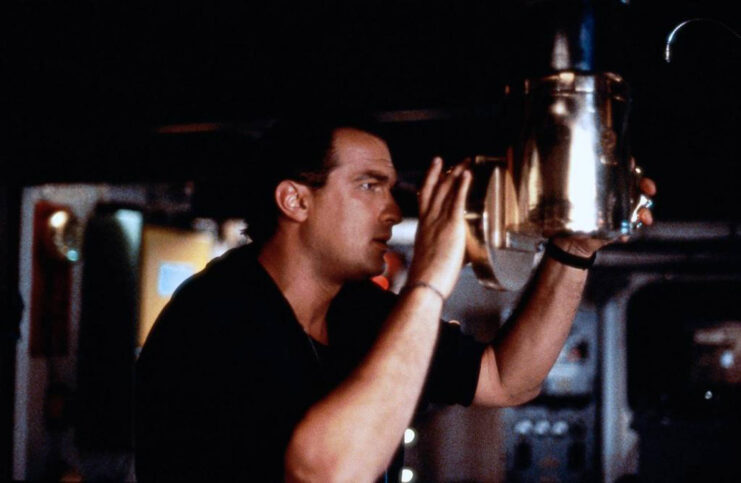
Jamie Foggo describes a scene in the 1992 movie Under Siege as one of the most accurate in how to load a 16-inch projectile into a barrel. He likened the weight of the round to a 2,000-pound Volkswagen Beetle, admiring how the scene emphasizes just how important it is to handle the weapon with extreme care.
In the US Navy, there are several spark-proof tools implemented when loading a projectile and its powder charges. The latter are highly explosive, so crewmen must exercise caution to not make any mistakes.
During the following scene, Steven Seagal is seen looking through a brass contraption. Foggo describes it as a gun sight, through which a captain would look to see the direction they vessel is firing. This device was used long before fire-control radars and gun directors were introduced.
When Tommy Lee Jones gets thrown back from the firing turrets, Foggo explains that’s exactly why battleship procedures are in place. “The blast blew him back a dozen feet, which is probably fairly accurate,” he says.
Fairing far better than Godzilla vs. King Kong, the retired admiral gives Under Siege a rating of 7/10.
Battleship (2012)
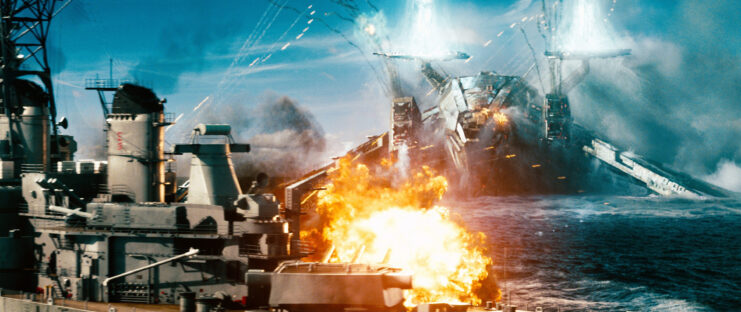
Jamie Foggo calls Battleship (2012) one of his favorite movies. However, when it comes to its accuracy, there are some problems.
In one scene, the World War II-era warship lowers her anchor to keep itself from being hit by the aliens’ weapons. Foggo says this is “pretty hokey.” Anchors are long, yet limited. As the vessel is sailing in the Pacific Ocean, the retired admiral confirms it’s unlikely the anchor would have caught anything to allow the ship to swing around.
One area that the film does portray accurately is when the battleship fires her weapons broadside. Foggo explains that, when a ship does this, she can move significantly in the water. This forces her crewmen to adjust for course correction after firing.
Despite it being one of his favorite movies, Foggo gives Battleship a realism rating of 2/10.
Dunkirk (2017)
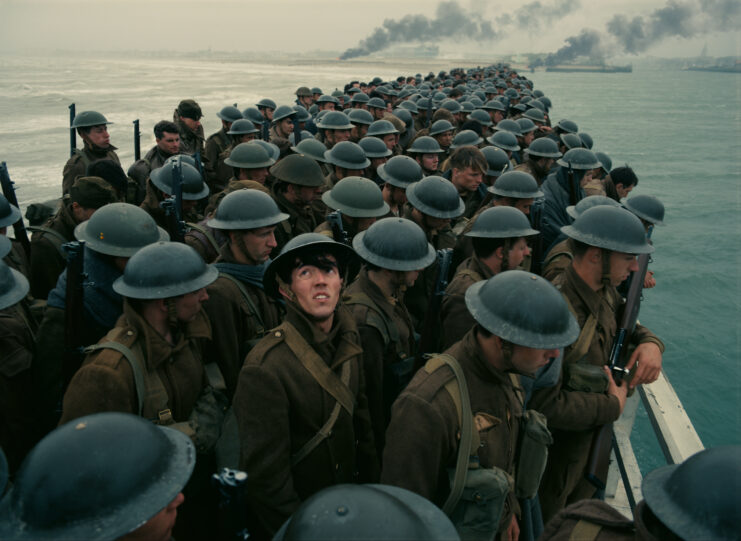
One of the most harrowing scenes in Dunkirk (2017) is when the ship begins to take on water. Jamie Foggo agrees that one of the greatest fears of any sailor is “being stuck in a compartment filling with water and being unable to get out.” He explains that, even if you are able to escape, you still have your boots and kit on, making it difficult not to sink below the water.
Foggo says the film does a great job of showcasing one of the difficult barriers to sailors making an escape from compartments: water-tight doors. They serve as a safety barrier, containing any water leaking into a compartment. He explains that the majority have two latching systems – or “dogs.” In normal operations, pushing the door shut triggers the latch. However, in “heightened readiness condition,” the wheel that locks the door must be turned counterclockwise to open it.
Showcasing such a point in the movie when hands are slippery and sailors are panicking, Foggo says such accuracy earns Dunkirk a perfect rating of 10/10.
Greyhound (2020)
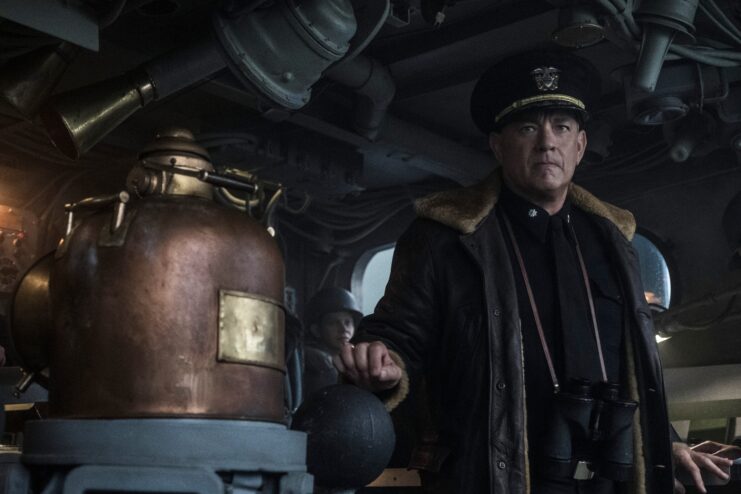
Jamie Foggo calls Greyhound (2020) “an absolutely phenomenal movie” and says it features strong historical accuracies. In one scene, the German U-boats employ “wolfpack” tactics, in which two torpedoes are shot at the ship from different directions. This approach was actually used during the Second World War, when the film is set.
When the torpedoes are fired, the wake is clearly visible, which is true of real ones. Foggo explains how the propellors cause cavitates – the production of bubbles as the torpedo moves through the water. It’s easy to spot, and Foggo says a sharp lookout could spot it early enough to conduct drastic evasive maneuvers.
The maneuverability of the destroyer in the film is also more believable in that it’s a much lighter battleship, weighing typically 8,000 tons. Specifically, during the Battle of the Atlantic, these vessels attacked surface ships and U-boats, meaning they had to move quickly and with agility.
Foggo also believes the explosion that occurs on the U-boat is also realistic. There’s often so much oil, weapons and fuel onboard that, following the initial penetration of the hull, these could cause a secondary explosion.
Thanks to its historical accuracy, the retired Navy admiral says, “This movie gets absolutely top marks from me.” The rating? 10/10.
Tomorrow Never Dies (1997)
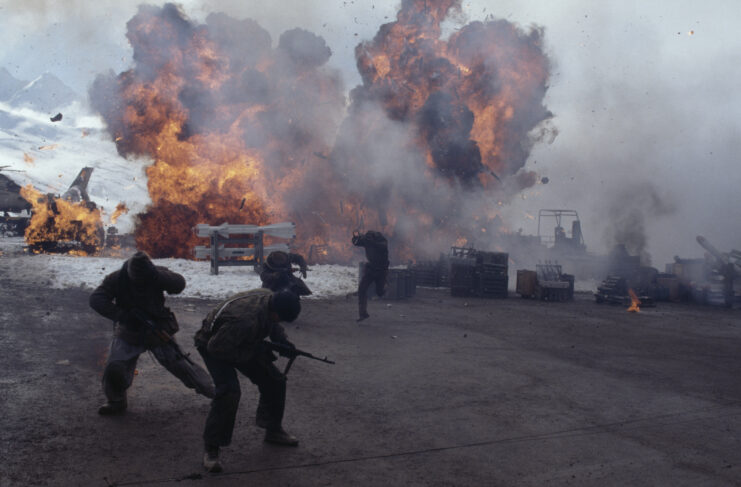
At one point in the James Bond film, Tomorrow Never Dies (1997), the HMS Devonshire finds herself believing she’s sailing in international waters. However, the antagonists deceive the crew by interfering with the ship’s navigation system, concealing the fact they’re actually operating one mile inside China’s territorial waters. Jamie Foggo reveals this happens in warfare, even today, making the scenario in the movie fairly realistic.
As the scene progresses, a series of red lights go off inside the warship, signaling a call to battle stations. Foggo says that, yes, low lights would go off, especially during the night when they’re operating in a darkened-ship status. However, they aren’t necessarily red – that seems to have been added for dramatic effect.
The extremely unrealistic part of the scene comes when the enemy deploys a drill-type weapon, which penetrates the hull of the warship. Foggo explains that puncturing a weak spot in the hull wouldn’t sink the ship.
Despite having some realistic elements, Foggo says the Tomorrow Never Dies is largely inaccurate, and gives it a rating of just 1/10.
The Last Ship (2014-18)
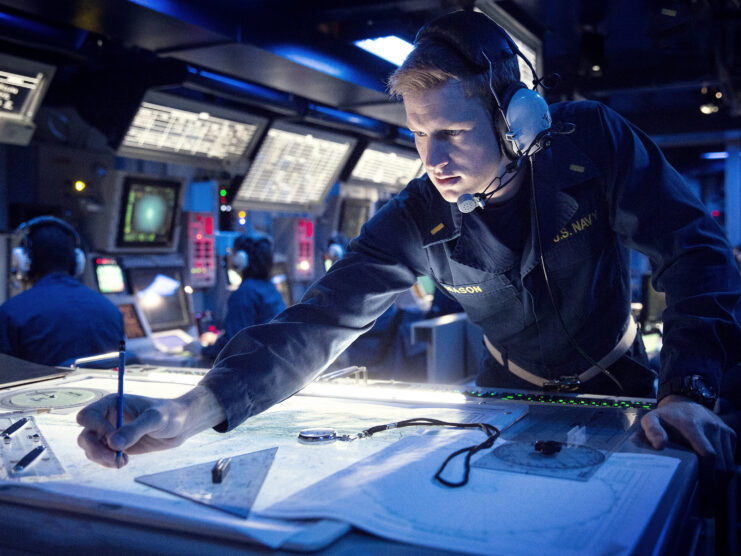
The television show The Last Ship (2014-18) is one that Jamie Foggo is very familiar with. In a particular clip, discussion about an unidentified object is had, which turns out to be an Unmanned Aerial Vehicle (UAV) – a real reconnaissance and surveillance tool that’s seen several upgrades throughout the years.
As the scene changes and orders are commanded, there’s a lack of panic. Foggo explains that it’s true that “the real heart of the ship for fighting is in the combat information center,” and commends the series for accurately portraying the levels of calmness and professionalism that would actually occur on a warship.
For this, Foggo gives the show high marks – 9/10.
Tora! Tora! Tora! (1970)
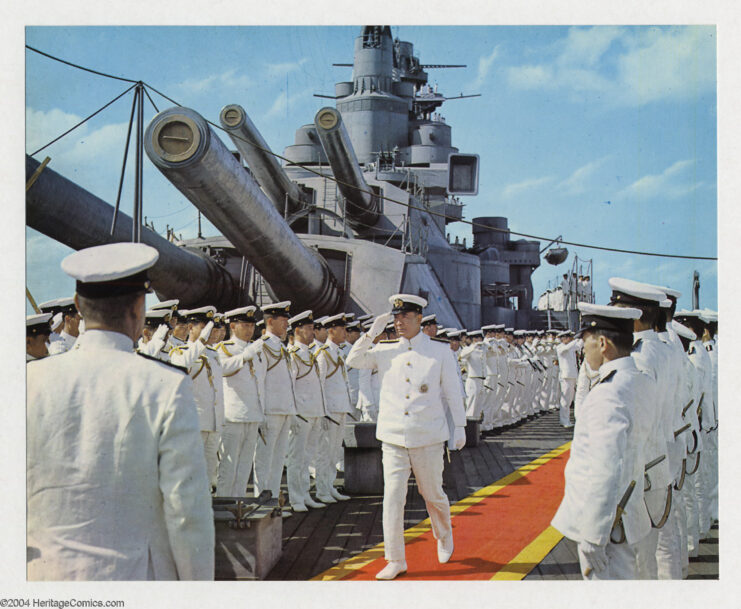
In a scene from Tora! Tora! Tora! (1970), a whistle signal can be heard from the warship’s bridge. Jamie Foggo says that, in the US Navy, the tradition remains where a boatswain will blow his pipe to get the crew’s attention, making that element accurate.
Additionally, the gunner’s mates drop a series of depth charges into the water after the enemy submarine dives. It’s true that, back in the day, crewmen would have to set the charge to explode at a certain depth (through a general guess), but submarines could only dive so far.
Given its overall historical accuracy, Foggo gives Tora! Tora! Tora! a rating of 10/10.
Watch the video!
More from us: Samurai Sword Master Kaito Suiju Rates Japanese Sword Movie Scenes
Now that you’ve read what Jamie Foggo has to say about the movies, give the video a watch and see what you think! Do you agree with his ratings, or would you have voted differently? Be sure to take into account that Foggo is a retired US Navy admiral, which means he knows his stuff.
